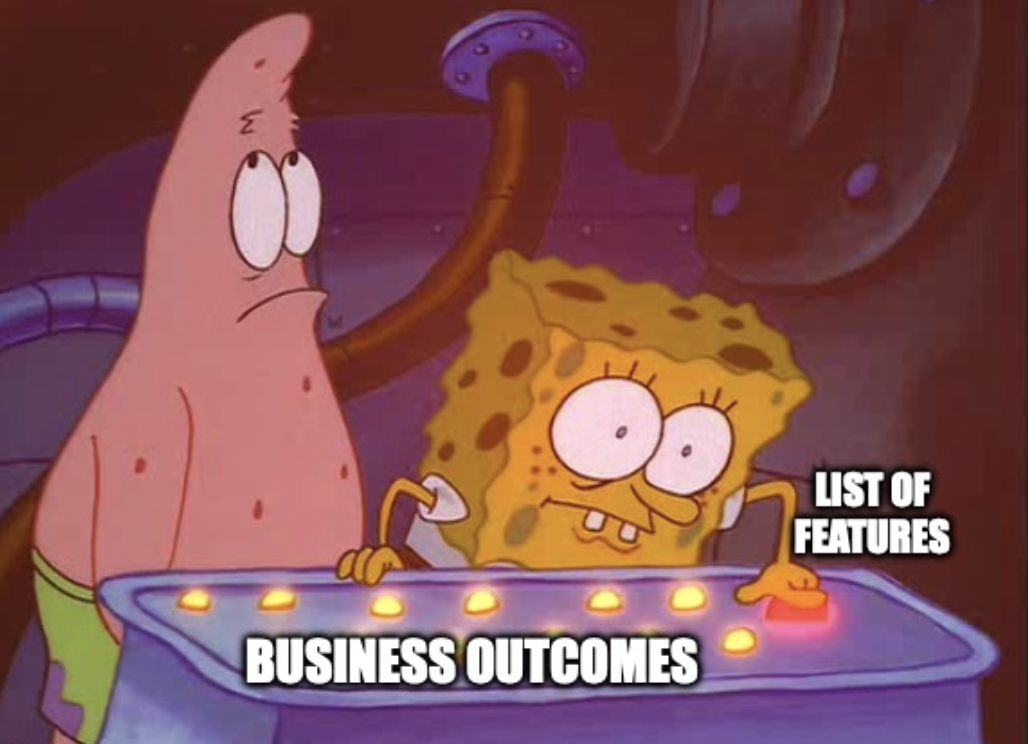What is the Strategy-Execution Gap in Sales? How AI Sales Tools Bridge the Divide


What is the Strategy-Execution Gap in Sales?
The head of sales walks into QBR with a crisp growth plan: a tighter ICP, a push into two verticals, a new discovery framework, and revenue targets that make sense on paper. Three months later, the forecast misses again. Pipeline reviews feel like theatre. Enablement decks were shipped and promptly forgotten. Reps say they are "following the process," yet deals stall in the same stages and slip the same way. The plan was sound. The execution on the ground was not.
That distance between intent and behavior is the strategy execution gap. In sales, it shows up when leadership defines direction, but daily conversations with buyers do not reflect it. You hear it when managers say "we talked about this at kickoff" while recordings still capture generic discovery. You see it when CRM notes do not map to the new play, when call follow-ups do not match the qualification standard, and when the forecast keeps leaning on hope rather than evidence. The strategy exists, but it is not consistently lived by the field.
This is not a new problem. Researchers studying execution found that most organizations struggle to turn strategy into results, and even basic alignment is fragile. In one well-known study, only about half of middle managers could name even one of their company's top five priorities, a telling signal that communication alone rarely translates into coordinated action.
Meanwhile, sellers spend surprisingly little time selling. Even with modern tools, Salesforce's latest State of Sales reports show reps spend roughly 30 percent of their week in core customer-facing selling, a figure that has barely moved in recent years. The rest goes to administrative work, internal tasks, and tool hygiene. If most of the week is consumed by non-selling activities, then "strategy" competes with busywork for attention, and execution loses.
Data quality makes things worse. Poor CRM data quietly derails initiatives and undermines coaching. In 2024 research on CRM data management, more than four in ten companies reported halting valuable initiatives in the prior year because their customer data was not trustworthy. Bad inputs lead to bad guidance and even worse measurement, which leaders then feel in missed plans and credibility hits.
Forecasting is the final mirror that exposes the execution gap. When sellers do not consistently apply the strategy in the field, the pipeline carries noise, and forecasts drift. Xactly's 2024 benchmarking found only one in five organizations achieved forecasts within five percent of reality, with a large share missing by ten percent or more. That is not merely a math problem. It is an execution problem that became a planning problem.
How the Gap Forms in a Normal Quarter
A leadership team defines a sales strategy that is coherent. They tighten the ICP, say no to a few segments, elevate a repeatable discovery motion, and set a deal health rubric that should predict slippage earlier. Enablement distills this into slides and a training week. Everyone nods.
Week three, calendar pressure returns. Managers chase deals that look big rather than deals that fit. Reps fall back to familiar questions. Collateral sprawls across folders. CRM fields multiply, then go stale. Pipeline reviews reward presentation skill more than evidence. By the time a missed forecast arrives, leaders cannot separate which piece of the motion failed, because most of the system is anecdotal.
The wrong turn here is not intent. It is the assumption that communication and one-time training will carry a strategy into the thousands of micro-decisions reps make during a quarter. Research on execution repeatedly warns against this assumption: coordination across units, rapid adaptation at the front line, and clarity of priorities are the levers that change outcomes, not slogans on a slide.
How to Close the Sales Strategy Execution Gap with AI Sales Tools
Closing the gap is not about more meetings. It is about making the right behavior the easy behavior. Teams that do this treat the sales strategy as a living system that shows up everywhere the rep works, in the exact moment they need it.
Start with Living AI Playbooks. Static PDFs are invisible in the moment that matters. The job is to encode strategy as steps and signals directly inside the tools reps already use. That means the ICP is not only a paragraph in a wiki. It becomes a guided discovery plan, a "fit confidence" indicator fed by conversation patterns, and a next-best-action when buyer signals change.
Pair that with AI Rep Coaching that listens, summarizes, and nudges without adding friction. AI is not a magic trick in sales. It is a force multiplier for time and consistency.
The third pillar is CRM Auto-Update. If execution depends on recognizing patterns and suggesting the right move, then call notes and meeting outcomes cannot sit in longhand across a hundred systems. Automate capture. Normalize fields. Close the loop between coaching and CRM so that behaviors and outcomes stay connected.
Finally, Pipeline Reviews must change from inspection to improvement. A good pipeline review is not an interrogation. It is an evidence session where the manager and seller look at the same signals, agree on risks, and commit to one or two actions that match the playbook.
A Field View of the Sales Execution Gap
Consider a team expanding from mid-market into a regulated enterprise segment. The strategy calls for earlier security validation and a multi-threaded champion plan. Without a living system, reps try to brute-force their way through with old mid-market habits. Calls skip risk topics because they feel awkward. Security reviews arrive late and stall the deal. The forecast assumes a linear path and keeps slipping.
Now switch the environment. The discovery plan points to the segment-specific risks before the first call. The AI assistant listens and drafts a Smart Call Summary that anchors on those risks, then logs the exchange cleanly. The playbook suggests a parallel security conversation once engagement crosses a set threshold. Pipeline health does not reward large deal value alone. It rewards the proof that the right stakeholders are leaning in.
This is the same team. The difference is the operating system for execution.
Why This Approach is Credible
Skeptics will say that most tools overpromise. They are right to ask for proof. The point is not that software alone closes the gap. It is that reliable, in-the-flow guidance and clean measurement produce the conditions under which strategy survives calendar pressure.
Look at what the broader research says. Execution fails when alignment is weak and front lines cannot coordinate across silos. It improves when priorities are reinforced in the work, not only in communication.
Look at the buyer side. If a growing share of buyers want rep-free journeys, sellers must earn the right to be in fewer, more decisive conversations. That means better preparation, more relevant follow-ups, and tighter proof.
Look at the time budget. With only about 30 percent of the week available for core selling, every minute squandered on duplicate notes or hunting collateral drags execution down.
Look at the coaching literature. When coaching is structured and connected to actual selling moments, win rates rise and quota attainment improves, not by magic but by repetition of the right behaviors.
And look at forecasting. When evidence behind deal health is explicit and consistent, accuracy improves.
Zime's Point of View
Zime was built around this execution problem. The system treats your sales strategy as something living. It captures what top performers do differently, then turns those patterns into guided actions that show up where reps already work. It listens to conversations so reps do not waste hours writing long notes. It generates smart summaries, keeps CRM updated, and powers AI rep coaching. It cleans up pipeline hygiene so your pipeline reviews surface missing stakeholders, broken mutual action plans, and stage risks without grandstanding. It feeds Win-Loss Analysis with actual conversation data so that strategy and enablement can tune the playbook with evidence, not anecdotes.
Customers have seen this difference firsthand. Bureau realized a 30 percent increase in deal conversion and discovery calls were once a weak link. Reps captured inconsistent notes, managers struggled to coach off incomplete data, and promising deals slipped through. By structuring discovery through Zime's Living AI Playbooks and automating call documentation with Smart Call Summaries, they gave sellers a repeatable way to surface the right buyer signals. The outcome wasn't just anecdotal. Bureau reported a 30 percent increase in deal conversion—a direct sign that when strategy shows up inside every call, execution tightens and results follow.
Versa Networks tells a parallel story. Their challenge was not a lack of strategy, but a bottleneck in coaching. Versa Networks cut coaching time in half! Managers were spending hours every week rehashing calls, while reps kept reverting to familiar habits. Zime's AI Rep Coaching flipped the dynamic by automating the basics and spotlighting the few behaviors that mattered. Managers no longer wasted cycles on generic feedback. Instead, they focused on fine-tuning the moments that moved deals forward. Versa cut coaching time in half, freed managers to be more strategic, and still raised performance standards across the team.
How to Start Closing Your Sales Execution Gap
Begin with a single high-impact motion. Take one vertical, one ICP slice, or one product tier where the execution gap is most visible. Codify the discovery flow and proof sequence as a living playbook. Make sure the critical buyer signals can be captured directly from conversations and reflected cleanly in CRM, so that managers review facts instead of opinions. Coach against those signals in pipeline reviews. After just a few selling cycles, compare behavior change and forecast accuracy against a control group, you'll see quickly whether strategy is being lived or only remembered from kickoff.
As you scale, resist the temptation to make the playbook encyclopedic. The best sales execution systems are opinionated about a handful of behaviors that really move the needle, and rigorous about measurement. That's the essence of closing the sales strategy execution gap: not more processes, but fewer, sharper ones reinforced consistently. Zime was built around that principle. It gives sales teams AI-driven playbooks, rep coaching, and automated insights that transform strategy from a plan on paper into daily habits. Customers like Bureau, who saw deal conversions jump 30 percent, and Versa Networks, who halved their coaching time while raising performance, show what happens when the distance between strategy and execution shrinks. The human craft of selling doesn't go away, it simply gains the structure and lift it needs to thrive in an AI-driven sales world.
Ready to Close Your Sales Execution Gap?
Transform your sales strategy from paper to practice with Zime's AI-driven tools. See how Living AI Playbooks, AI Rep Coaching, and CRM Auto-Update can help your team execute consistently and improve forecast accuracy.



